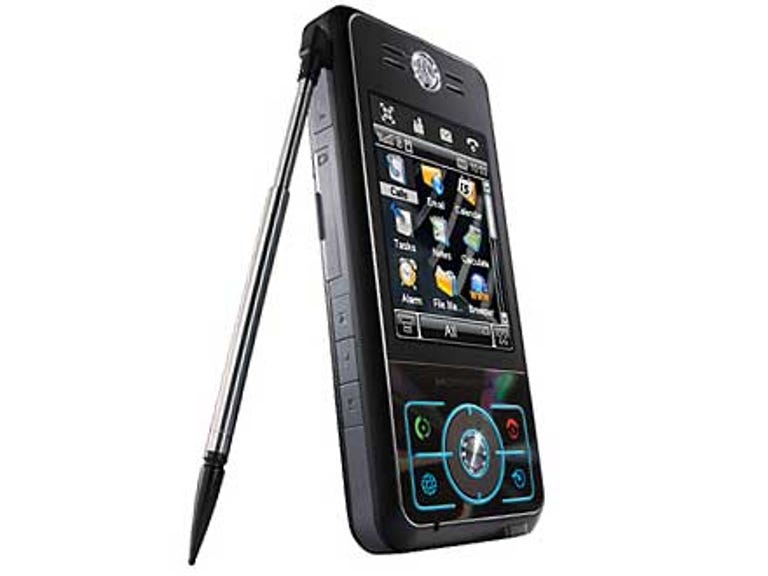 Why You Can Trust CNET
Why You Can Trust CNET Motorola ROKR E6 review: Motorola ROKR E6
The E6 tries valiantly to be a smartphone and a sexy consumer gadget. It's a pity then, that it didn't try that little bit harder.
Design
Motorola's taken something of an each-way bet with the MOTOROKR E6. On the one hand, it's pitching it as a business tool -- and they're typically styled with more of an eye to efficiency than attractiveness. On the other hand, the E6 is also pitched as an multimedia entertainment phone, which usually puts paid to dull grey plastic utilitarianism. It's a difficult balancing act, but to its credit the E6 pulls it off, for the most part.
The Good
The Bad
The Bottom Line
Physically it's a large touchscreen-based phone, sitting somewhere in-between the size of a full smartphone and a smaller candybar-style mobile -- 111mm x 51.5mm x 14.5mm with a carrying weight of 122 grams, to be precise. A five way selector at the base of the display is surrounded with four application buttons -- including the usual call/hang up options. The top of the phone houses a standard 3.5mm audio jack, which is very nice to see -- it means you're not limited to a specific vendor's headset, and can instead pick and choose depending on your needs.
Features
The E6 is a tri-band GSM phone -- so no 3G or HSDPA, which may be off-putting for some, especially given the phone's business push. Unlike many other smartphones, it's also not running Windows Mobile, instead opting for a Linux-based solution. This plays out in the applications it supports, which naturally enough don't include the mobile versions of Word or Excel. What it does offer for business users is inbuilt business card scanning via the integrated 2-megapixel camera housed on the rear of the phone. Bluetooth is supported - including A2DP if you're a fan of bluetooth headphones -- but there's no Wi-Fi support built into the phone.
On the multimedia side, RealPlayer is built in, and support for SD cards -- up to 2GB -- means it's easy to shift photo, video and music data to and from the E6. It also supports USB (including charging) for cabled file transfers.
Performance
Our general impression of the E6 after a week's heavy testing was that it's a capable enough phone for general use, but a bit sluggish in the details -- even when answering calls. Several times we'd hit the answer button and begin talking, only to realise that the E6 was a couple of seconds behind us in actually registering the button press. Likewise, applications ran fairly slowly on the E6, further limiting its business potential. The business card scanning application does work, but it's too fiddly for real-world applications. Ideally, you'd want to be able to take a quick snapshot of a card on the go. Instead, we found ourselves fiddling with macro settings and keeping our hands very still to get an acceptable image.
The display screen is nice and bright, and as a basic multimedia phone it's quite enjoyable to use - but there are plenty of more capable multimedia phones out there. Motorola's dual-headed pitch for the E6 may have satisfied us in the design stakes, as it's clearly a phone that could suit either boadroom or beer garden, but when it comes to actual usage, it's just not that flash in either aspect.


